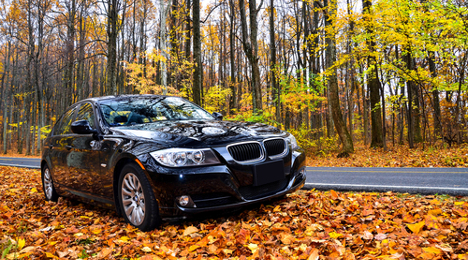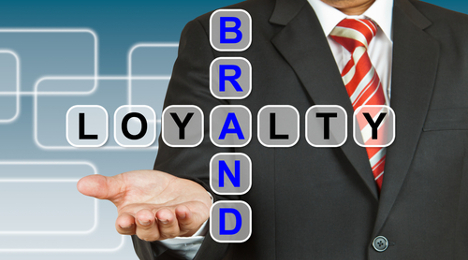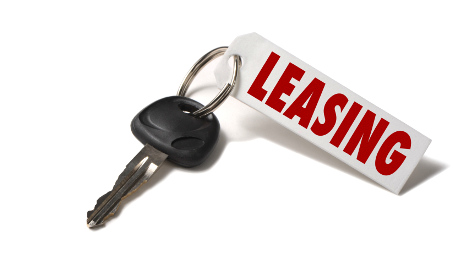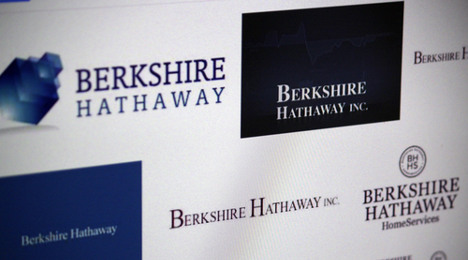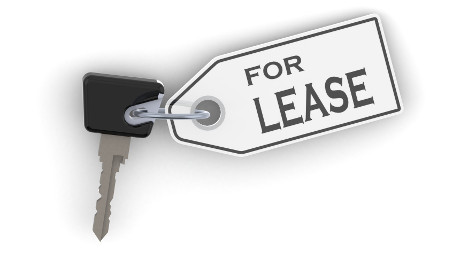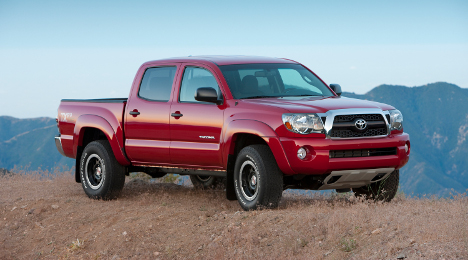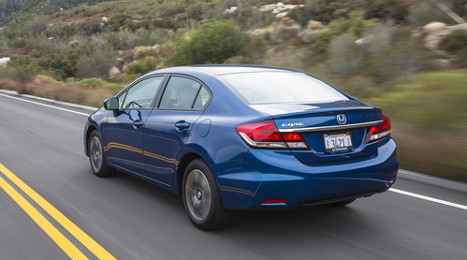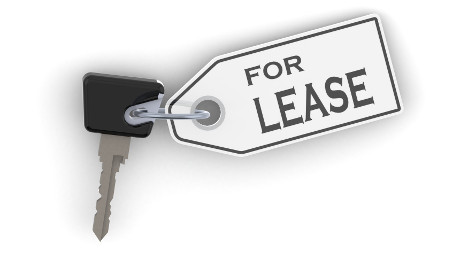There’s been a lot of chatter recently in regards to the growing number of lease returns and its impact on used-car prices. It is true that there are a great deal of leases returning – an expected figure near 2.1 million vehicles for 2014 before the year is over, according to Manheim data.
There is a fear, in some minds, that too many lease returns are putting downward pressure on used-vehicle prices.
But that is just a small slice of the story, according to Swapalease.com’s executive vice president Scot Hall.
“It’s easy to point a finger at leasing when it comes to falling car prices simply because there has been a great resurgence in lease deals since the recession,” Hall said. “However, when you go from 10 million SAAR to 16 million SAAR, there’s a great resurgence all around, not just leasing. It’s difficult to congratulate leasing in helping you get to 16 million SAAR and then also say it’s hurting the industry by forcing falling auto prices.”
Swapalease.com also points out several other factors to consider when thinking about the over 2 million vehicles expected to return from their leases this year:
- Between 8-9 million trade-ins, overall, are expected in 2014 (per industry average)
- Leasing, according to previous numbers, will account for just 22.5 percent of vehicles coming back into dealerships this year
- Lease return vehicles (3-year-old) are actually helping to fuel the CPO recovery
What is your outlook on this topic? Let us know in the comments or tweet us @autoremkting.
A recent analysis released by Experian Automotive this week shines some light on the relationship between a consumer’s length of ownership of a vehicle and their likelihood of repurchasing their next vehicle from the same brand, otherwise known as brand loyalty.
The relationship may surprise you.
According to Experian’s data, the longer consumers hold onto their vehicles, the less likely they are to remain loyal to the brand. In fact, it appears as though the most significant drop in brand loyalty occurs after 36 months, according to the study, making leases ideal for brands to hold onto their drivers.
“Leases with their fixed length ownership cycle are typically strong contributors to brand loyalty,” said Brad Smith, Experian Automotive’s director of automotive market statistics.
Over the course of seven years of ownership, a lot of things change, including vehicle product offerings, vehicle budget and credit score," Smith continued. "Additionally, the increase in time between dealer interactions, whether they are for sales or service, increases the probability of a customer defecting to the competition.”
As of the first quarter of 2014, the average length of ownership was 93 months — 7.75 years — with an average brand-loyalty rate of 49.5 percent. Consumers who owned a vehicle for 12 months ended up purchasing from the same brand family 57.3 percent of the time, while that rate dropped to 33.8 percent for people who owned their vehicle for 144 months, or 12 years.
The most significant drop – after 36 months, decreased brand loyalty by nearly 10 percentage points.
“Understanding how long consumers hang onto vehicles, or how often they return to market and purchase the same brand, are critical pieces of information for automotive dealers, retailers and manufacturers,” Smith said.
“On the one hand, increased ownership lengths create greater opportunity for dealer and aftermarket service organizations," he continued. "On the other hand, it underscores the importance for service centers to focus on customer service and retention.
"Dealers and manufacturers should continue to emphasize on keeping customers loyal to the service drive and using these customer interactions to highlight their new and soon to be released product offerings, as these efforts will aid in increasing service revenue and repurchase loyalty," Smith went on to say.
So which manufacturers lead the way in length of ownership and brand loyalty?
Dodge, Buick, Chevrolet, Ford and Mitsubishi, respectively, were the top five brands for length of ownership, ranging from 113 months of ownership for Dodge and Buick to 109 months for Mitsubishi.
On the other end of the spectrum, Ford, Subaru, Toyota, Kia and Lexus showed the highest rates of brand loyalty, respectively, ranging from 61 percent with Ford to 55.8 percent with Lexus. Ford, with 110 months for their average length of ownership, was the only brand to break into the top five in both categories.
Other important findings, provided by Experian Automotive:
- In Q1 2014, the average length of ownership increased by three months from Q1 2012
- Brand loyalty in the first quarter of 2014 improved by 3.9 percent from two years ago
- Acura and Volvo led the luxury-vehicle segment with the longest length of ownership in Q1 2014 at 99 months and 92 months, respectively
- Lexus and Mercedes-Benz led the luxury-vehicle segment with the highest brand loyalty in Q1 2012 at 55.8 percent and 52.7 percent, respectively
Kelley Blue Book senior analyst Alec Gutierrez shared the leasing numbers he thinks might “keep auto executives up at night.” KBB expects the new-car market to originate 3.4 million leases by the time this year concludes.
So why would top OEM brass walk the floor about that number? Gutierrez pointed out that the expected figure is nearly 1 million higher than what the industry produced in 2005, 2006 and 2007 — the years before the Great Recession when the industry leased about 2.5 million new vehicles annually.
“When we talk about those units coming back in a couple of years, you’re talking about a 1-million unit increase over what was typical prior to the recession,” Gutierrez said during a conference call with industry media outlets on Monday.
In earlier comments, Gutierrez dissected trends regarding new-model incentives, strategy oftentimes utilized to move new metal that’s connected with an installment contract. But he mentioned “a lot of the increased incentive activity that we’re seeing right now is not necessarily additional cash on the hood.” Rather some incentive activity is switching to leasing since about 25 percent of new-car sales is being done through that method, a level that’s only increased throughout the year.
“With that being said, managing that incentive spend strategy related to leasing is going to be critically important for the manufacturers if they don’t want to see the used-car market soften to a degree that’s going to impact the residuals and then their ability to lease in the future,” Gutierrez said.
“To be honest, I think they are mindful of the type leasing activity that’s taking place right now,” he continued. “If they weren’t thinking about it already when we have conversations with them, it becomes top of mind.”
Gutierrez acknowledged it’s difficult for him and the rest of the KBB team to predict what the automakers are going to do in terms of incentive spending.
“But based on comments that they’ve made, conversations I’ve had and really just what we see in the data, I do think they’ll be able to maintain discipline overall,” said Gutierrez, who will be a part of the large contingent of industry experts on hand for Used Car Week that begins on Monday at the Red Rock Casino Resort and Spa in Las Vegas.
“I think we have seen things accelerate over recent months. In the past we’ve seen aggressive incentive spend in regards to pushing trucks and SUVs, but that’s not the case today,” he continued. “Trucks are doing a fine job of selling themselves. (Actual transaction pricing) are very healthy there and have been moving up steadily toward a $40,000 actual transaction price in the full-size pickup truck segment with incentive spend on the decline.”
With incentives not piling up on trucks and SUVs, where are OEMs pushing their incentive resources? Gutierrez had an answer.
“Where you’re seeing any incentives start to creep up is in the high-volume segments — compact cars, midsize cars — where the competition has grown extraordinarily fierce,” he said. “Interestingly what you’re seeing with incentive spend in those segment it’s not exactly driving growth in terms of market share for those segment respectively.”
Gutierrez indicated that sales of new compact and midsize cars are higher on a year-over-year basis, but they’re not keeping pace with the entire industry.
“So what you’re seeing is the manufacturers trying to fight for added visibility in what has become a very difficult segment,” Gutierrez said. “That’s why you’re seeing Honda increase incentive spend more so than other manufacturers to try to push their core models, Accord and Civic, which are now facing very stiff competition from Ford, Chevrolet and even Chrysler, which was just not present in those segments a few years ago.”
Despite the volume of consumers who can obtain zero-percent financing as automakers compete to move new metal, the analyst team at Edmunds.com doesn’t expect leasing volume to diminish.
In an extended analysis about the rise of zero-percent APR volume, site analysts still maintain that leasing is a growing trend among buyers, pointing toward volume of 27 percent of new-vehicle sales this year being a lease.
“However, shoppers that elect to finance are fundamentally different from shoppers that lease,” Edmunds said in an analysis, adding that, “Zero-percent APR offers appeal to buy-and-hold shoppers committed to long-term ownership.
“For many shoppers, though, leasing brings an economical, non-committal and no-hassle approach to vehicle ownership,” analysts continued. “Leasing has surged in recent years, and that momentum will likely hold strong despite cheaper car loans.”
Edmunds indicated that about 10 percent of buyers who financed a new vehicle through a dealer or manufacturer program so far this year received a zero-percent APR loan. Analysts computed that APR means buyers save $3,554 during an average loan term of 67 months.
Not surprisingly, most zero-percent APR contracts are not connected with high-line units. Edmunds determined that 3 percent of financed purchases of luxury cars carried a zero-percent APR, compared with 11 percent of non-luxury vehicles.
While the penetration of zero-percent APR deals now stands at double digits, the level is less than half of what Edmunds designated as recent highs.
Analysts mentioned the level soared above 20 percent back in the summer of 2006 when domestic automakers started to offer employee pricing. Edmunds pointed out the level appear again in the first half of 2010 when Toyota emerged from its major recall campaigns.
The company also mentioned that the level of zero-percent financing hasn’t been below 5 percent for more than a month or two since the second half of 2005. As a result, analysts cautioned about the long-term ramifications of zero-percent APR financing.
“For automakers, zero percent APR offers have been an effective method for increasing market share, but the boost is generally short lived,” analysts said. “Once shoppers are accustomed to zero percent offers, it loses its appeal to drive shoppers into dealerships.”
Those scenarios likely mean the value of leasing is enhanced for both dealers and OEMs, especially for their certified pre-owned prospects. For example, Manheim chief economist Tom Webb shared a post on his blog that highlighted Ford’s off-lease volume, which nearly doubled from the fourth quarter of last year (34,000 units) to the first quarter of this year (60,000). As the year is winding down, Ford’s volume is down (44,000 units) but is still 17,000 units higher than the year-ago level.
And dealers are able to find those vehicles for lower prices in the auction lanes. Ford said auction values for units coming out of a 36-month lease dipped below $18,000 during the third quarter, the first time that has happened this year. The Q3 reading of $17,660 was $735 lower on a sequential basis.
Third-quarter auction values for Blue Oval units coming off of a 24-month lease didn’t drop below $18,000, but they still softened by $575 sequentially and $945 on a year-over-year basis.
If one needs proof of the value that auto dealerships can potentially bring to the business community at large, just look at the announcement coming out of Berkshire Hathaway on Thursday — and the reaction it got from one of the top leaders of the remarketing business.
Berkshire Hathaway — headed by one of the business world’s most recognizable figures, Warren Buffett — has agreed to purchase the Van Tuyl Group, the largest privately owned dealership group in the U.S.
“This acquisition shows the value and importance of dealerships such as the Van Tuyl Group in the automotive ecosystems,” Cox Automotive president Sandy Schwartz said in comments provided to Auto Remarketing.
“As we continue to innovate and find more effective and efficient ways to further our industry and serve our customers, it's exciting to have a leader like Warren Buffett be a part of the automotive community,” he added.
Officials are targeting a first quarter completion of the transaction, which is subject to a variety of stipulations, including approvals from the major auto OEMs and certain customary closing conditions like regulatory approvals.
Once Van Tuyl Group officially becomes part of Berkshire Hathaway’s operations, it will be renamed Berkshire Hathaway Automotive. Larry Van Tuyl — who will become chairman — and Jeff Rachor, who will take on chief executive officer, will continue to lead the dealership group along with their senior management team.
Headquarters for Berkshire Hathaway Automotive will be in Dallas.
”The Van Tuyl Group fits perfectly into Berkshire Hathaway from both a financial and cultural viewpoint. Larry Van Tuyl along with his father, Cecil, spent decades building outstanding dealerships operated by local partners,” said Buffett, Berkshire Hathaway’s chairman and CEO.
“In recent years, he has shared management with Jeff Rachor, a seasoned auto retailer who will retain a financial interest in all dealerships. The Van Tuyl Group enjoys excellent relations with the major auto manufacturers and delivers unusually high volumes at its 78 locations. This is just the beginning for Berkshire Hathaway Automotive,” he continued.
Larry Van Tuyl added: “We are proud of all that has been accomplished with the support of our dealer partners, our employees and the manufacturers that we represent. We are very pleased to have one of the world’s most respected companies, Berkshire Hathaway, assume ownership of our company with the commitment to preserving our unique culture, business model and philosophy.
“I cannot think of a better steward to continue the legacy of what my father and I have built over the last 62 years, and I am confident this transaction will position the company on a course of continued success.”
The news of this coming sale follows a first half that showed dealership acquisitions on the rise.
The new-car leasing market has swarmed back in recent years and is arguably as strong as it has ever been.
And while there isn’t nearly as much industry discussion, data or consumer options when it comes to the pre-owned side of leasing, numbers shared Friday with Auto Remarketing shed some light on how the used-car lease has fared this year and over the past decade.
Monthly used-car leasing numbers moved slightly ahead of year-ago figures in August, according to data from CNW Research, which also indicates that year-to-date numbers while down — 1.84 percent from 2013 — are modestly stronger than recession-era trending.
CNW’s data indicates there were 105,992 used-vehicle leases in August, compared to 105,716 in August 2013.
Through eight months of the year, there have been 692,218 used leases, according to CNW.
There were 705,180 used-car leases written through August 2013. In eight months of 2012, there were 705,027 used leases.
The 2014 year-to-date figure does, however, beat the respective 8-month sums from 2008 (by 2.44 percent), 2009 (9.54 percent), 2010 (up 12.49 percent) and 2011 (6.09 percent).
In an earlier Auto Remarketing story on used leasing, we talked with Scot Hall of Swapalease.com, who suggested that used leases, particularly in the certified pre-owned space, could make sense — as long as they are done correctly. Stay tuned to Auto Remarketing to hear from CPO managers and others in the leasing arena, as they offer their perspective on this market — one that may have potential for growth.
Swapalease.com noticed consumers are looking for a specific kind of lease to assume — truck leases with less than eight months remaining on the contract.
Site officials believe this trend is developing because lessees in certain trucks still hold a positive equity position with a few months left in the term.
Swapalease said that compact SUVs and all pickup trucks have held strong pricing positions through the life of their three-year lease terms. The site explained drivers of these vehicles are seeing similar lease-end equity positions felt by drivers of fuel-efficient vehicles three to four years ago when those vehicles were in demand by dealers.
Swapalease executive vice president Scot Hall explained a still-strong used-vehicle market has continued to drive dealer demand for trucks in good condition. Since most leases are less than 3 years old with 36,000 miles or less, Hall noticed dealers are offering aggressive buy-back deals to consumers.
Historically, more than 50 percent of site shoppers look to assume an existing lease with 12 to 18 months remaining on the contract. Swapalease.com has noticed a new trend of shoppers looking for short-term leases for vehicles like the Jeep Wrangler, Nissan Xterra, Cadillac Escalade, Ford Explorer and Toyota Tacoma.
Swapalease contends people take over these short-term leases with the intention of then selling or trading in the vehicle with their local dealer. In many cases, the equity position can be worth anywhere from $2,000 to $3,000 above current value.
“It’s always very telling when we see an uptick in demand for certain truck models because trucks are notorious for having lower-than-average lease penetration rates,” Hall said.
“In this case, we believe shoppers are taking advantage of the still-tight inventory environment for trucks in good condition, and leased vehicles are always at the top of that list,” he went on to say.
The outlook for potential certified pre-owned inventory that dealers will need in 24 to 36 months just keeps getting more favorable. The latest: Experian Automotive determined the percentage of new vehicles moved by franchised dealers and connected to a lease hit a new record during the second quarter.
According to its latest State of the Automotive Finance Market report, Experian indicated that of all new vehicles sold in Q2, leases accounted for a record high 25.6 percent, up from 23.4 percent the previous year.
And the majority of leases being written will leave those vehicles in the sweet spot to be certified — and CPO continues to grow in the used-car business. Experian pegged the average term at 35 months, while 70.06 percent of all Q2 new-model leases fell between 25 and 36 months.
On average, lessees are paying $407 monthly, according to the report. But that figure might be skewed slightly as all 10 of the models that Experian said were leased most often in Q2 have an average monthly payment below that mark.
For dealers looking for material to show shoppers who are weighing the options between a lease and a financed purchase, consider this rundown Experian shared that highlight the top 10 models leased in the second quarter with the average payment figures:
Honda Civic
Loan Payment: $357
Lease Payment $247
Honda Accord
Loan Payment: $421
Lease Payment $320
Honda CR-V
Loan Payment: $401
Lease Payment $312
Toyota Camry
Loan Payment: $405
Lease Payment $299
Toyota Corolla
Loan Payment: $349
Lease Payment $259
Ford Escape
Loan Payment: $418
Lease Payment $327
Ford Fusion
Loan Payment: $415
Lease Payment $318
Nissan Altima
Loan Payment: $417
Lease Payment $297
Toyota RAV4
Loan Payment: $451
Lease Payment $331
Chevrolet Cruze
Loan Payment: $363
Lease Payment $234
Among those 10 models mentioned, Experian noted that only one vehicle — the Nissan Altima — had more leases written in the second quarter of last year than this past quarter. The most significant year-over-year gains were posted by the Honda CR-V (2.2 percent to 3.1 percent), Toyota Corolla (1.9 percent to 2.5 percent) and Toyota RAV4 (1.3 percent to 1.8 percent).
As much as leasing is heating up in the U.S., the situation is even more favorable in Canada as Swapalease.com highlighted this week. Though leasing isn’t as popular as it was in Canada before the economic downturn in 2008, for many vehicles, site officials pointed out lease penetration rates remain above 40 percent.
Lease marketplace Swapalease.com suggested American dealers look north when considering how to improve their leasing services.
With Canada’s historically high leasing rates, Swapalease — which works with customers in both countries — noted some interesting differences in how lease programs are structures, including transfer of ownership, and contends it would serve U.S. dealers well to take a page out of our northern neighbor's book.
First, we have to take a look at the lease penetration rates. Though leasing isn’t as popular as it was in Canada before the economic downturn in 2008, for many vehicles, lease penetration rates remain above 40 percent.
Contrast that to American leasing penetration rates, which sits right around 25 percent.
According to Experian's latest State of the Auto Finance Market report, of all new vehicles sold in Q2, leases accounts for a record high of 25.6 percent, up from 23.4 percent the previous year.
Though some of this discrepancy could be due to the fact cars are more expensive to purchase in Canada, Swapalease says there other factors pushing leasing in Canada, as well.
For example, the site pointed out that leasing transfers between individuals are handled at the dealership, not by the individuals themselves.
Since both the individuals involved in the switch are already at the dealership, the dealer has a better chance of selling the outgoing lessee into a new vehicle.
Dealers are also making a bit more on the deal, as many Candian dealers charge their own fee for lease transfer processing.
Swapalease.com contends this process leads to a faster transfer as well as profit opportunities from service arrangements for both customers.
"In many cases, the incoming lessee can ask questions about the vehicle and receive inspection assurances on the spot, while the outgoing lessee can arrange for new transportation needs all in one day," said Scot Hall, executive vice president at Swapalease. "Since time is money in a lease, the outgoing lessees also benefit by the expedited time frame, eliminating extra monthly payments in a lengthy transfer approval process."
Leasing has picked back up to pre-recession highs, and many analysts are predicting leasing penetration to exceed levels seen before the Great Recession.
And as manufacturers reveal their Labor Day lease deals, leasing popularity isn’t expected to slow down anytime soon.
In fact, Scot Hall, executive vice president of Wantalease.com, said he expects leasing to remain top-of-mind for consumers as we move into fall.
“We’re seeing some of the best balance of lease deals seen in a while across the major domestic and foreign brands,” said Hall. “Clearly, leasing is poised to maintain its popularity in front of consumers throughout the fall season, especially as the new 2015 models become available in the showrooms.”
During the upcoming holiday week, Buick and Toyota dealers may reap the most benefit from incentives, as some of the best car lease deals for Labor Day stem from these brands.
For example, the pricing on Toyota RAV4 and Avalon lease offers have fallen 15.6 percent and 12.1 percent, respectively, since July — a trend that may prove attractive to holiday auto shoppers.
Meanwhile, the Buick Regal Premium and Lacrosse lease offers represent some of the most aggressive deals for national customers on Wantalease.com, site officials shared.
The Cadillac CTS, specifically, may also be a unit to push on Labor Day, as its lease offer has dropped the most since July, dropping by 17.3 percent. A 39-month lease is now offered at $487.33 per month.
And for customers working on a tight budget, Wantalease.com officials pointed out there are five units with leasing monthly payments currently under $225: Nissan Sentra SV ($204.53); the Ford Focus SE ($207.29); the Chevrolet Cruze LT ($210.64); the Buick Regal Premium ($219.00); and the Ford Fusion SE ($223.96).

